Dreaming of an unforgettable adventure? India’s diverse landscapes, vibrant cultures, and rich history make it a top destination for travelers. Whether you’re exploring bustling cities or serene countryside, there’s something for everyone.
In this 10-day itinerary, you’ll uncover the best of India, from the iconic Taj Mahal to the bustling streets of Mumbai. With our carefully curated guide, you’ll experience the essence of this incredible country without missing a beat. So pack your bags and get ready for a journey of a lifetime.
Key Takeaways
- A 10-day itinerary in India covers must-visit locations like Delhi, Agra, Jaipur, and Ranthambore, offering a blend of history, culture, architecture, and wildlife exploration.
- Key highlights include the Taj Mahal and Agra Fort in Agra, Amber Fort and City Palace in Jaipur, and Ranthambore National Park for wildlife safaris.
- Delhi’s attractions span from iconic landmarks like India Gate to vibrant areas like Connaught Place, with hidden gems such as Agrasen Ki Baoli and Hauz Khas Village enriching the experience.
- Cultural and practical insights are provided, including tips on the best times to visit, sustainable travel practices, and recommended local dining options.
- Accommodations and transportation tips are tailored to enhance the travel experience, with suggestions ranging from luxury hotels to budget-friendly options and advice on efficient modes of travel within cities.
- Final day activities in Delhi offer a blend of shopping at Dilli Haat for unique souvenirs and savoring local cuisine, ensuring a well-rounded and memorable end to the journey.
Day 1: Exploring Delhi’s Historic Sites
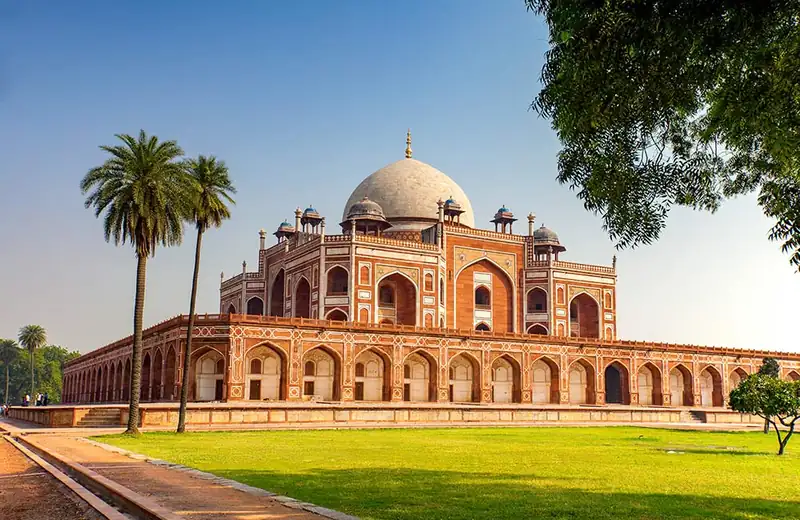
Start your 10-day journey in India by diving into the historical wonders of Delhi. With its vibrant culture and rich history, Delhi is sure to captivate you.
Visit India Gate
Begin your day at the iconic India Gate, a stunning war memorial in the heart of New Delhi. Open 24 hours, it’s best visited early in the morning or late in the evening to avoid the midday heat. This towering archway stands as a symbol of India’s independence and honors the soldiers who perished in World War I. Don’t miss the chance to stroll around its lush lawns and take in the serene atmosphere.
Explore Connaught Place
From India Gate, head to Connaught Place, Delhi’s bustling commercial center. Known for its distinctive circular design and colonial architecture, Connaught Place offers a mix of shopping, dining, and cultural experiences. Wander through its curved two-storey buildings, explore local shops and cafes, and soak in the hustle and bustle of this vibrant area.
Tour Parliament House

Cap off your morning with a tour of Parliament House, the seat of India’s government. Although the interior is not open to the general public, you can admire the building from the outside. With its circular structure and classical style, Parliament House is a testament to India’s architectural prowess. For a closer look, consider participating in guided tours that offer insights into its historical and political significance.
Hidden Gems
- Agrasen Ki Baoli: A historic stepwell hidden in the heart of Delhi. It’s an ancient marvel that provides a quiet retreat amidst the hustle of the city.
- Hauz Khas Village: An urban hub that mixes medieval history with electric nightlife. Cafes, boutiques, and art galleries add a contemporary twist.
Accommodations
| Hotel Name | Price Range (Per Night) | Distance to India Gate | Amenities |
|---|---|---|---|
| Le Meridian | $120 – $200 | 1.2 miles | Pool, Free Wi-Fi, Breakfast |
| The Imperial | $150 – $250 | 2.1 miles | Spa, Fine Dining, Historic Tours |
| Radisson Blu Marina | $100 – $180 | 0.5 miles | Fitness Center, Airport Shuttle |
Dining Highlights
- Parikrama: A revolving restaurant offering panoramic views of the city while you dine on Indian and international cuisine.
- Kake Da Hotel: A legendary spot known for its rich, flavorful North Indian dishes that won’t expensive.
- Getting Around: Delhi’s metro system is efficient and affordable. Taxis and auto-rickshaws are also plentiful.
- Seasonal Variations: Visit between October and March to avoid the extreme heat and monsoon rains.
- Sustainability Tips: Carry a reusable water bottle to stay hydrated, and avoid single-use plastics while exploring.
Incorporating elements of history and modernity, Delhi sets the stage for your Indian adventure. From monumental landmarks to hidden gems, you’ll find each corner of the capital bursting with stories waiting to be discovered.
Day 2: Cultural Insights in Delhi
Exploring Delhi will immerse you in a rich world of history, culture, and modernity. On your second day, dive deep into the city’s cultural heart with visits to two fascinating locations.
Wander Through Lodi Garden
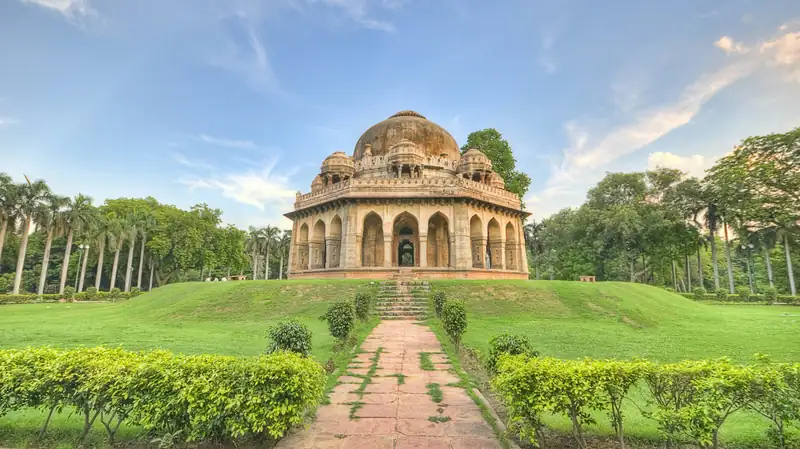
Start your day at Lodi Garden, a serene oasis during bustling New Delhi. This park is famous for its historical tombs and lush greenery. Wander along the winding paths, taking in the 15th-century monuments like Sikandar Lodi’s Tomb and Shish Gumbad. Enjoy the peaceful atmosphere where locals practice yoga, jog, or have picnics. Entry is free, and the best time to visit is early morning or late afternoon when the temperatures are cooler.
Visit Indira Gandhi Memorial Museum
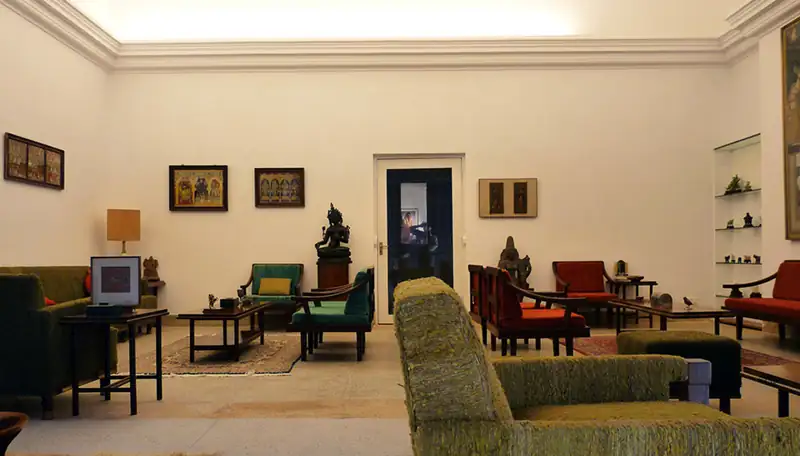
Next, head to the Indira Gandhi Memorial Museum, located in the former residence of India’s first female Prime Minister. The museum offers a poignant glimpse into her life and legacy. Walk through rooms preserved as they were during her life, and view personal artifacts, photographs, and newspaper clippings. The outdoor memorial marks the spot where she was assassinated in 1984. Entry to the museum is free, but it’s advised to check the opening hours in advance.
Day 3: Immersive Delhi Experience
Explore Local Markets
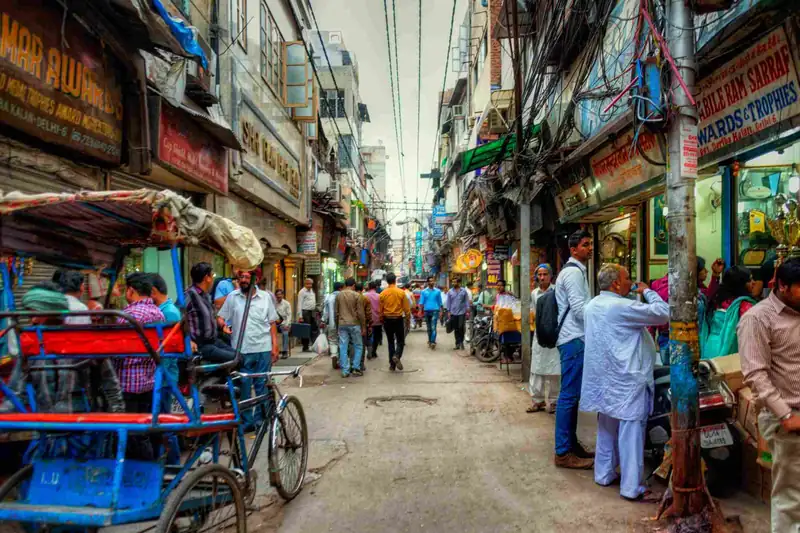
Morning in Old Delhi
Start your day in Old Delhi with a visit to the iconic Jama Masjid, one of India’s largest and most stunning mosques. Here, you’ll marvel at the grand architecture and immerse yourself in the spirituality of the place. Once you’ve absorbed the serenity, take a thrilling cycle rickshaw ride through the narrow, bustling lanes of Chandni Chowk. This historic market area is alive with vibrant street food stalls, glittering jewelry, and a multitude of fabric shops.
Local Markets
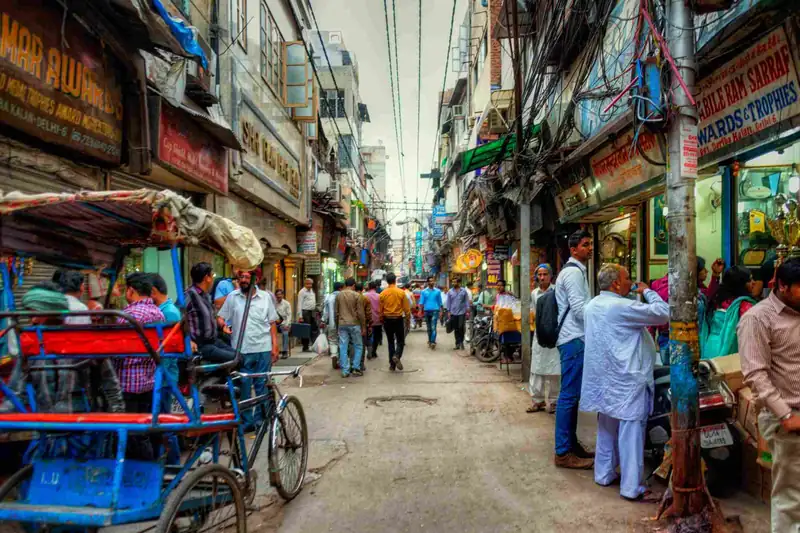
Exploring local markets in Old Delhi is a feast for the senses. Here are some must-visit spots:
- Chandni Chowk: Jump into a world of diverse goods. You’ll find everything from aromatic spices and rich fabrics to exquisite jewelry. Don’t miss out on the famous paranthas (stuffed breads) at an iconic breakfast spot.
- Kinari Bazaar: If you have a passion for textiles, this market is dreamlike. Known for its elaborate zari and zardosi work, you’ll find a variety of embroidered wonders here. Perfect for picking up unique souvenirs.
- Dariba Kalan: This market is a treasure trove for jewelry enthusiasts. Famous for its silver and gold items, it’s the ideal place to purchase exquisite pieces at more reasonable prices.
Afternoon in New Delhi
Your afternoon will be spent exploring New Delhi’s grandeur. After a delectable lunch at one of the local eateries, head to India Gate. This towering war memorial is not just an architectural marvel but also a poignant symbol of India’s independence. Walking around the lush, sprawling grounds provides a peaceful contrast to the morning’s hustle and bustle.
Tips for an Immersive Experience
To make the most of your immersive Delhi experience, keep these tips in mind:
- Best Time to Visit: October to March is ideal, as temperatures are more comfortable.
- Transportation: Cycle rickshaws are perfect for short distances in Old Delhi. For New Delhi, utilizing rideshare apps or hiring a private taxi can be more convenient.
- Sustainability: Opt for reusable shopping bags and avoid using plastic. Support local artisans by buying handmade goods.
- Budget Considerations: While markets can be a great place to find deals, practice your bargaining skills to ensure you’re getting fair prices.
Day 4: Journey to Agra
Get ready to leave Delhi behind and set off for Agra, a city teeming with history and wonder. This journey takes about 3-4 hours by car or a short train ride, marking a transition from the bustling capital to a quieter, yet equally captivating city.
Visit Taj Mahal
Witness the ethereal beauty of the Taj Mahal. Arrive early for the sunrise or later during sunset to admire how the white marble transforms under the changing light. The monument stands as a testament to love, built by Emperor Shah Jahan in memory of his beloved wife Mumtaz Mahal.
- Photographic Tip: The Shah Jahan–built benches provide perfect photo ops.
- Seasonal Advice: Early winter mornings are less crowded and offer pleasant weather.
- Sustainability Tip: Carry a reusable water bottle as single-use plastics are discouraged within the premises.
Explore Agra Fort
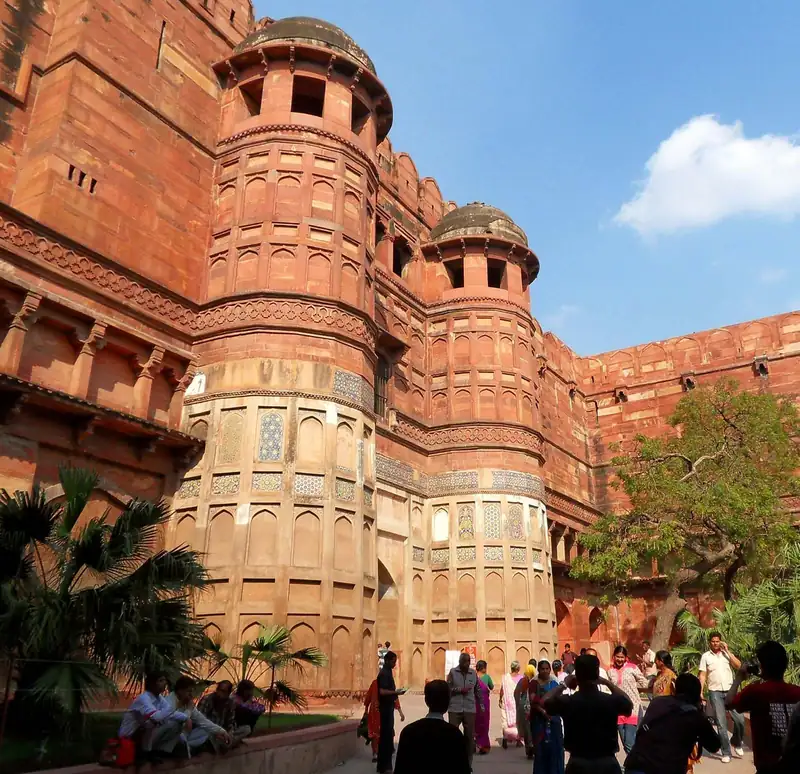
After soaking in the splendor of the Taj Mahal, head to the Agra Fort. This UNESCO World Heritage site offers a deep jump into Mughal history. Wander through its courtyards, marvel at the intricate architecture, and glimpse the fort’s majestic halls and palaces.
- Historical Detail: The fort was initially built by Emperor Akbar and later enhanced by Shah Jahan.
- Visitor Note: Wear comfortable shoes as you’ll walk a fair bit to explore its vast expanse.
- Cultural Insight: The Diwan-i-Am (Hall of Public Audience) and the Diwan-i-Khas (Hall of Private Audience) showcase Mughal architectural finesse.
Enhance your Agra experience by blending these visits with moments of personal reflection and a touch of practical planning.
Day 5: Discovering More of Agra
Visit Tomb of Akbar the Great
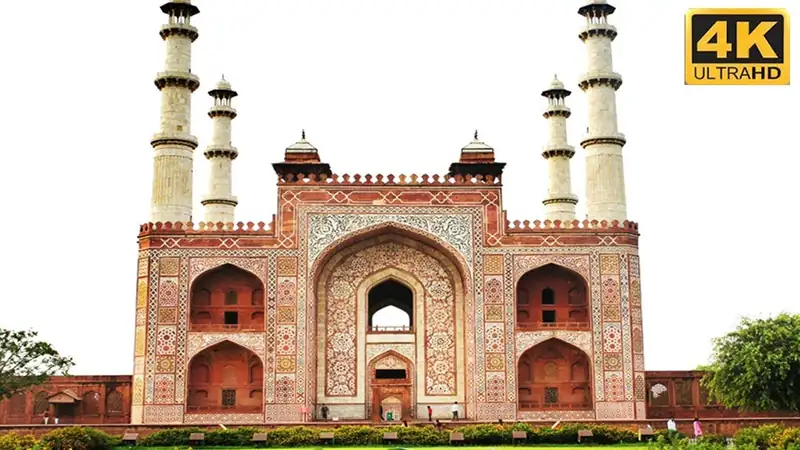
The Tomb of Akbar the Great, located in Sikandra, is an architectural marvel. This monument is the final resting place of Mughal Emperor Akbar and represents a blend of Hindu, Christian, Islamic, Buddhist, and Jain styles. Walking through the main gateway, you’ll notice intricate red sandstone carvings adorned with geometric and floral designs. The lush gardens surrounding the tomb provide a peaceful ambiance, perfect for reflecting on this historical site. Plan your visit during early morning or late afternoon to avoid the midday heat.
Explore Mehtab Bagh
Mehtab Bagh, also known as the Moonlight Garden, is a serene park situated on the north bank of the Yamuna River, directly opposite the Taj Mahal. It offers spectacular views, especially during sunrise and sunset when the Taj Mahal is bathed in soft, golden light. The garden’s pathways are lined with fragrant flowers and shaded by ancient trees, creating an idyllic setting for a leisurely stroll. Bring your camera to capture the enchanting reflections of the Taj in the water. Don’t forget to wear comfortable shoes and carry water, as exploring the park can be quite an experience.
By immersing yourself in these lesser-known yet equally captivating sites, you’ll gain a deeper appreciation for Agra’s rich history and culture.
Day 6: Enchanting Jaipur
Welcome to Jaipur, the vibrant capital of Rajasthan known for its rich history and breathtaking architecture. Prepare to be captivated as you explore the “Pink City” brimming with opulent palaces and historic forts.
Visit Amber Fort
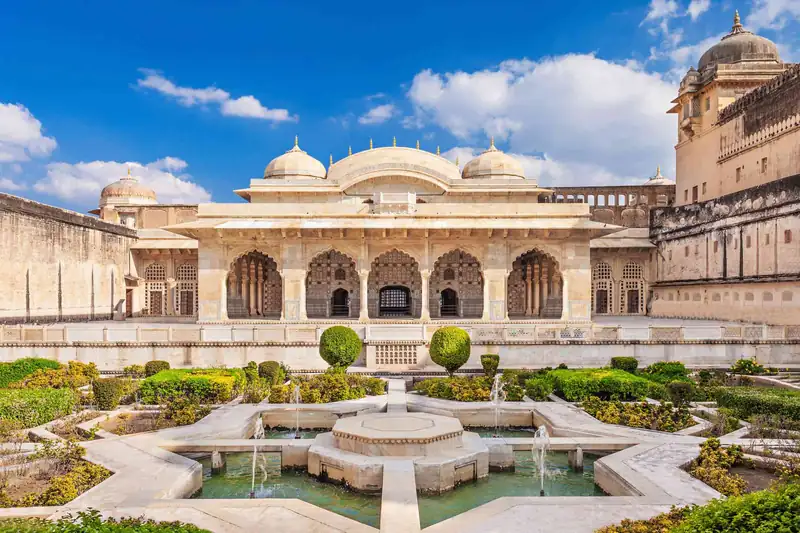
Amber Fort, located about 11 kilometers from Jaipur, is a must-visit for its stunning architecture and historical significance. You’ll be enchanted by the blend of Hindu and Mughal styles that define this majestic fort. Consider taking an elephant ride to the fort’s entrance, but always check the ethical treatment of the elephants first. Alternatively, you can opt for a jeep ride or walk to explore the beauty of the fort. The Sheesh Mahal, or Mirror Palace, is a highlight within Amber Fort, where intricate mirror work creates dazzling reflections in the sunlight.
Explore City Palace
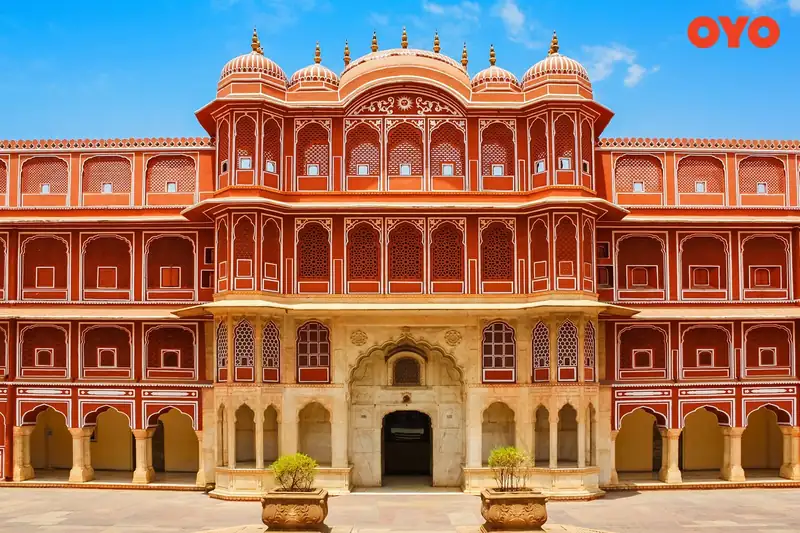
In the heart of Jaipur stands the City Palace, a splendid blend of Rajasthani and Mughal architecture. You’ll be amazed by the grandeur of structures like the Chandra Mahal and Mubarak Mahal. The palace complex houses a museum that offers a glimpse into the rich history of Jaipur’s royal family, showcasing artifacts, costumes, and manuscripts. Don’t miss the Peacock Gate with its mesmerizing frescoes, ideal for memorable photos. The palace’s intricacies reflect the lavish lifestyle of the Maharajas, making it a cultural treasure trove.
- Hawa Mahal: Known as the Palace of the Winds, this iconic monument is an architectural marvel with 953 small windows designed to allow royal ladies to observe street festivals without being seen. It’s a perfect spot for photography, especially at sunrise when the facade glows in soft, golden hues.
Day 7: Colorful Jaipur Adventures

Discover Jantar Mantar
Explore Jantar Mantar, an ancient astronomical observatory constructed by Maharaja Jai Singh II in the early 18th century. This UNESCO World Heritage Site is famous for its massive stone instruments and the world’s largest stone sundial, the Samrat Yantra. Marvel at the precision with which these structures measure time and celestial events, reflecting the advanced astronomical knowledge of ancient India. Visit in the morning when the site is less crowded and the light is perfect for capturing detailed photographs.
Stroll Through Hawa Mahal
Walk through the stunning Hawa Mahal, also known as the Palace of Winds. This iconic red and pink sandstone structure features 953 small windows, or ‘jharokhas’, decorated with intricate latticework. Built in 1799 by Maharaja Sawai Pratap Singh, Hawa Mahal was designed to allow royal ladies to observe street festivals while remaining unseen. Visit in the early morning for the best light and fewer tourists. Admire the façade from the street, then venture inside to experience the breeze flowing through the windows, which gives the palace its name.
Day 8: Wildlife at Ranthambore National Park
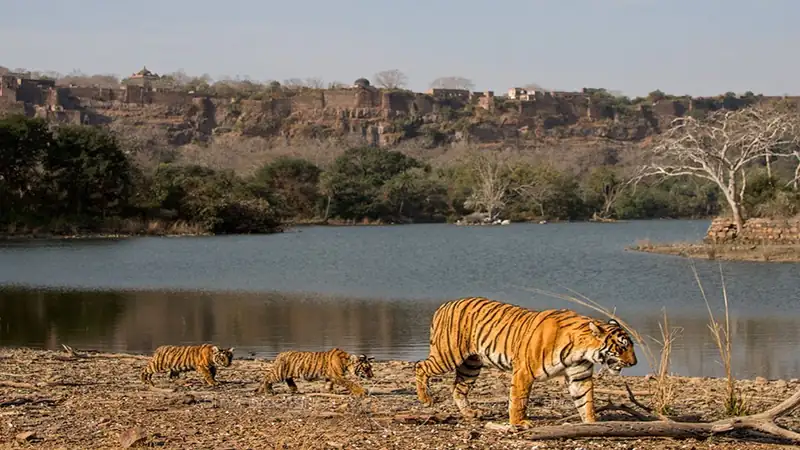
Morning Safari
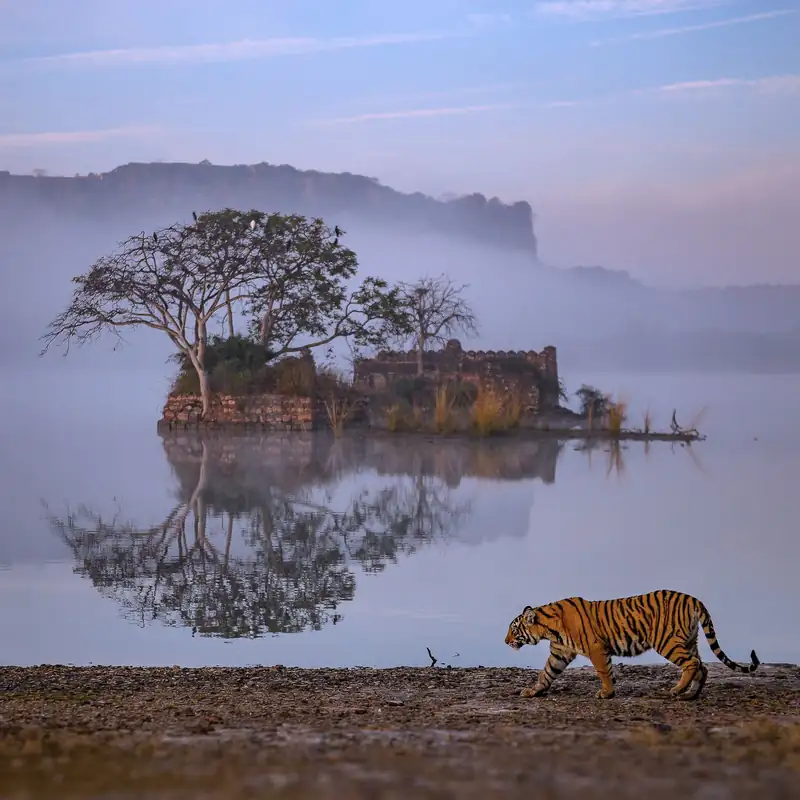
Start your day at the crack of dawn with an exhilarating morning safari. Ranthambore National Park, renowned for its Bengal tigers, offers a unique glimpse into the lives of these majestic big cats. It’s best to go early when the animals are most active. As you venture into the heart of the park, keep your camera ready to capture other wildlife such as leopards, hyenas, sloth bears, and various deer species.
Booking your safari slot in advance is crucial as availability can be limited, especially during peak seasons from October to March. Make sure to dress in layers because mornings can be chilly, even in tropical climates. Jeep and canter safaris are common, providing different perspectives of the park’s diverse terrain.
Evening Safari
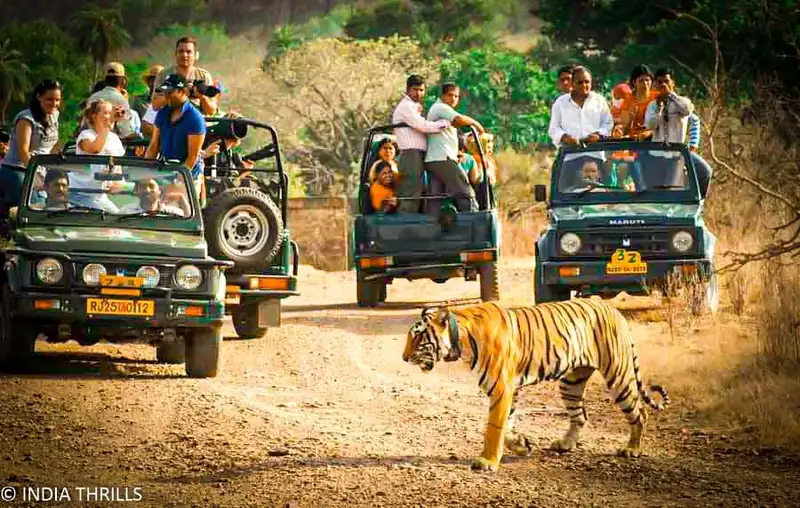
After a leisurely afternoon, begin on an evening safari to witness a whole new spectrum of wildlife activity. The park’s world changes dramatically with the setting sun, casting golden hues over lakes and dense forests. This is an opportune time to spot animals like the Indian fox, striped hyena, and several bird species preparing to roost.
Your experienced guides will navigate you through zones where tiger sightings are frequently reported. Since temperatures drop quickly after sunset, bring a light jacket for comfort. This safari also offers a chance to marvel at the ancient ruins of Ranthambore Fort, creating a picturesque and historical backdrop.
Accommodations
Choosing the right place to stay can enhance your Ranthambore experience. Here’s a comparison of popular options to suit different budgets:
| Accommodation | Type | Price Range per Night | Key Features |
|---|---|---|---|
| The Oberoi Vanyavilas | Luxury | $500-$700 | Spa, swimming pool, close to park entrance |
| Ranthambore Regency | Mid-Range | $100-$200 | Outdoor pool, family-friendly |
| Tiger Machan | Budget | $50-$100 | Tented camps, campfire evenings |
Dining Highlights
Ranthambore offers a variety of dining experiences, from resort restaurants to local eateries. Savor traditional Rajasthani dishes like Laal Maas (spicy mutton curry) and Dal Baati Churma (lentils with baked wheat dumplings). Many accommodations feature on-site dining with fresh, locally sourced ingredients.
Transportation & Practical Tips
Getting to Ranthambore is convenient with options like trains or taxis from Jaipur. The Sawai Madhopur railway station is the closest, just 14 km from the park. Within the park, safaris are organized in jeeps or canters for groups, with the former providing a more intimate experience. Always carry water, wear neutral-colored clothing, and respect the natural habitat by avoiding loud noises.
Sustainable Travel Tips
To ensure your visit is eco-friendly, choose accommodations that prioritize sustainability. Opt for tours conducted by certified guides who follow responsible tourism practices. Reduce plastic usage by carrying a reusable water bottle and never litter in the park.
By the end of your morning and evening safaris, you’ll have experienced the magic of Ranthambore’s wildlife, leaving with unforgettable memories and photographs.
Day 9: Continue Wildlife Exploration
Visit Ranthambore Fort
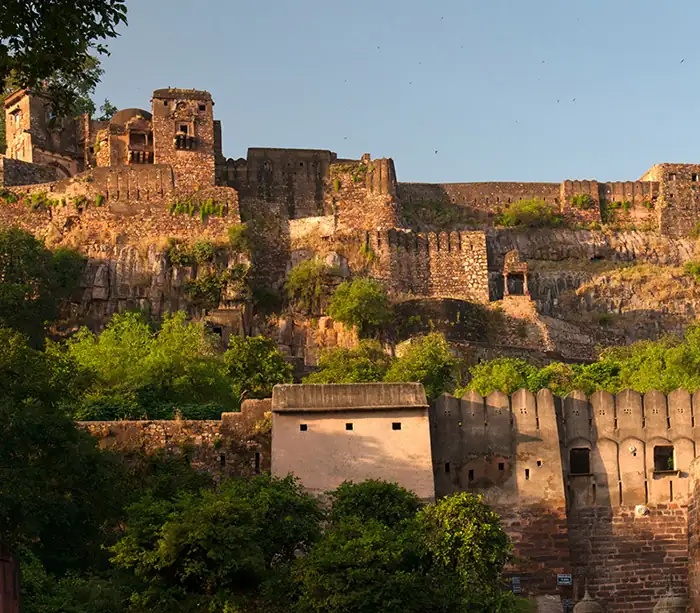
Explore Ranthambore Fort, situated within Ranthambore National Park. This UNESCO World Heritage Site offers panoramic views and rich history. The fort dates back to the 10th century and is intertwined with India’s royal past. The impressive architecture and strategic location provide insights into the fort’s historical significance.
You’ll find temples, palaces, and reservoirs within the fort. Notable spots include the Ganesh Temple, dedicated to Lord Ganesha, which attracts pilgrims year-round. You can spend time at the Jogi Mahal, near Padam Talao, a prime location for spotting wildlife, including the famous Ranthambore tigers.
For the best experience, wear comfortable shoes for climbing and bring water. Early morning visits are ideal to avoid the heat and crowds. Guides are available to enhance your understanding of the fort’s history and its connection to the surrounding world.
Day 10: Return to Delhi and Farewell
Shopping at Dilli Haat
Begin your final day in India with a stop at Dilli Haat. This vibrant marketplace offers a blend of traditional handicrafts, textiles, and local cuisine from various parts of India. Imagine browsing through colorful stalls filled with intricate jewelry, handmade pottery, and beautifully woven fabrics. Don’t miss the chance to taste regional dishes at the food stalls—a savory plate of momos from the Northeast or a spicy kebab from Punjab can be a delightful treat. Dilli Haat is an excellent place to pick up unique souvenirs and experience the local culture one last time.
Departure Preparations
After a morning of shopping, it’s time to prepare for your departure. Check out of your hotel and ensure all your travel documents are in order. Packing can be less stressful if you do it gradually, so start by organizing your new purchases and essentials. If you have time, consider visiting a last-minute attraction like the Lotus Temple or taking a leisurely walk through Lodi Garden. End your day with a farewell meal at one of Delhi’s renowned restaurants—Bukhara for its tandoori delicacies or Indian Accent for a modern twist on classic Indian flavors. Make sure to leave ample time to get to the airport, as Delhi traffic can be unpredictable.
This section provides a detailed and vivid account of the final day’s activities, focusing on shopping at Dilli Haat and making departure preparations, which includes packing, checking out of the hotel, and enjoying a farewell meal. The tone is engaging and informative, catering to the reader’s need for practical information and an immersive experience.
Conclusion
Embarking on this 10-day journey through India promises an unforgettable adventure filled with cultural, historical, and natural wonders. From the bustling streets of Delhi to the majestic Taj Mahal and the vibrant markets of Dilli Haat, every day offers new and enriching experiences. Whether you’re marveling at Jaipur’s architectural wonders or exploring the wildlife at Ranthambore National Park, you’ll find countless moments to cherish.
This itinerary is designed to ensure you don’t miss out on the best India has to offer while providing practical tips for a smooth and enjoyable trip. As you wrap up your adventure, take time to reflect on the diverse landscapes, rich history, and vibrant cultures you’ve encountered. With memories to last a lifetime, your journey through India will surely leave a lasting impression. Safe travels!
Frequently Asked Questions
Is 10 days in India enough?
10 days in India is sufficient to explore major highlights, especially if you follow a well-planned itinerary like the Golden Triangle tour. It allows you to experience India’s cultural, historical, and natural beauty.
Is India’s Golden Triangle worth visiting?
Yes, the Golden Triangle (Delhi, Agra, and Jaipur) is worth visiting. It offers a profound and lasting impact with its iconic landmarks like the Taj Mahal, vibrant streets of Jaipur, and historic sites in Delhi.
What should I not miss in Delhi?
Don’t miss exploring India Gate, Connaught Place, Parliament House, Agrasen Ki Baoli, and Hauz Khas Village. These sites offer a mix of historical significance and vibrant city life.
Can I visit the Taj Mahal at sunrise or sunset?
Yes, visiting the Taj Mahal at sunrise or sunset is recommended. These times provide the best lighting for photographs and are less crowded, offering a more serene experience.
How can I experience local culture in Jaipur?
In Jaipur, visit the Amber Fort, City Palace, and Hawa Mahal. Also, explore local markets, try traditional Rajasthani dishes, and visit Jantar Mantar to immerse yourself in the culture.
What activities are available at Ranthambore National Park?
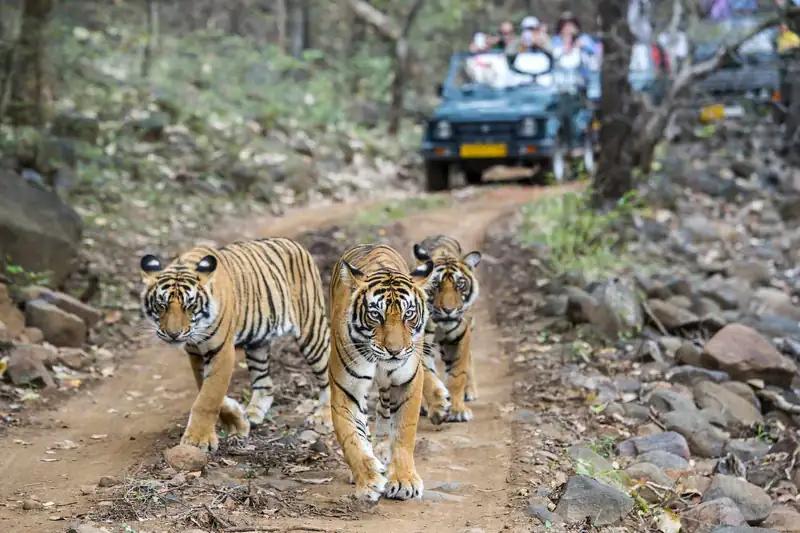
At Ranthambore National Park, you can go on morning and evening safaris to spot Bengal tigers and other wildlife. Booking safari slots in advance is crucial, and various accommodation options are available.
What is special about Ranthambore Fort?
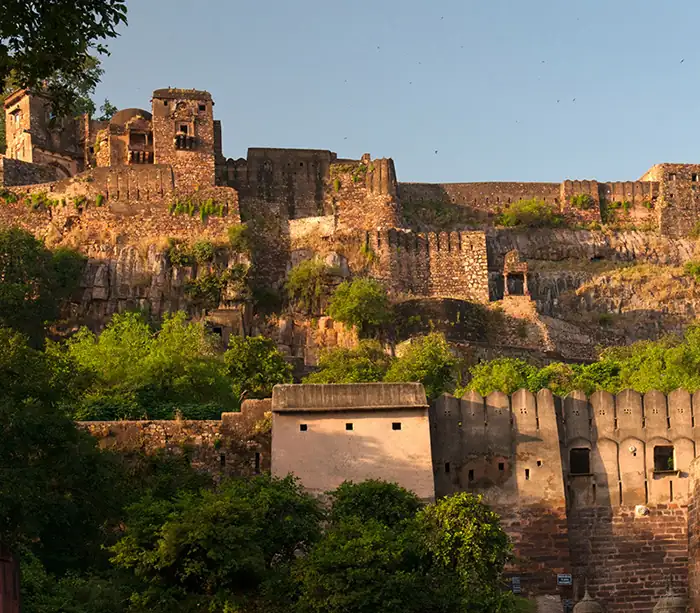
Ranthambore Fort is a UNESCO World Heritage Site with panoramic views, temples, palaces, and reservoirs. It offers rich historical significance and a connection to the surrounding wildlife.
What can I buy at Dilli Haat?
At Dilli Haat, you can shop for traditional handicrafts, textiles, and regional cuisine. It’s an excellent place to pick up unique souvenirs and experience diverse Indian cultures.
When is the best time to visit India?
The best time to visit India is in the winter (December to early March). The weather is cooler and more comfortable for exploring the country’s attractions.
How much cash can I bring to India?
You can bring up to US$5,000 or its equivalent without declaring. For amounts above US$10,000 (including coins, notes, and traveler’s checks), a declaration is required.
